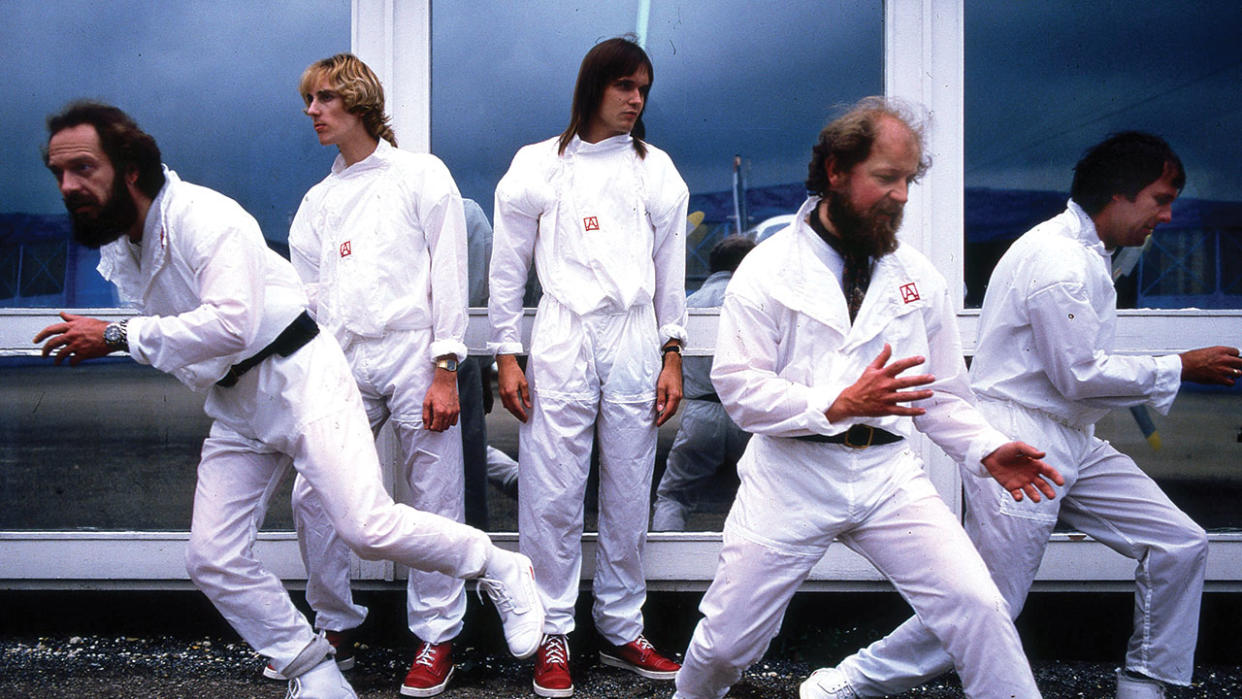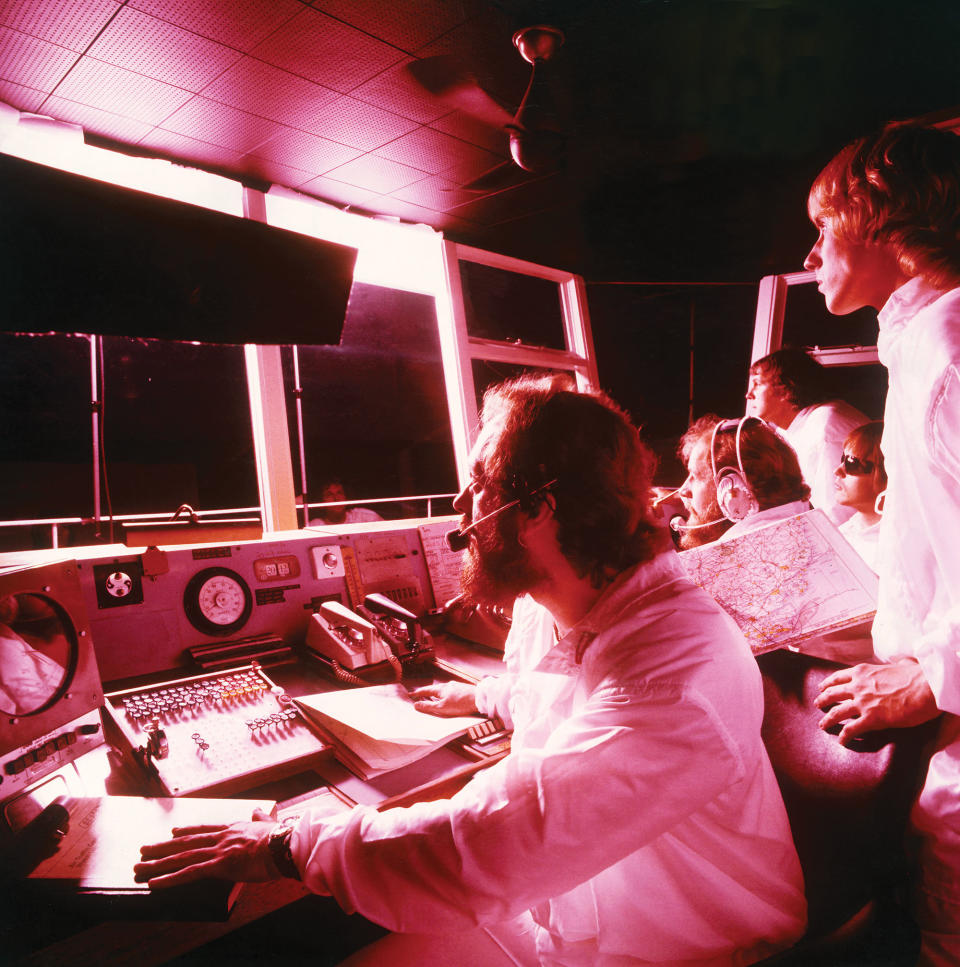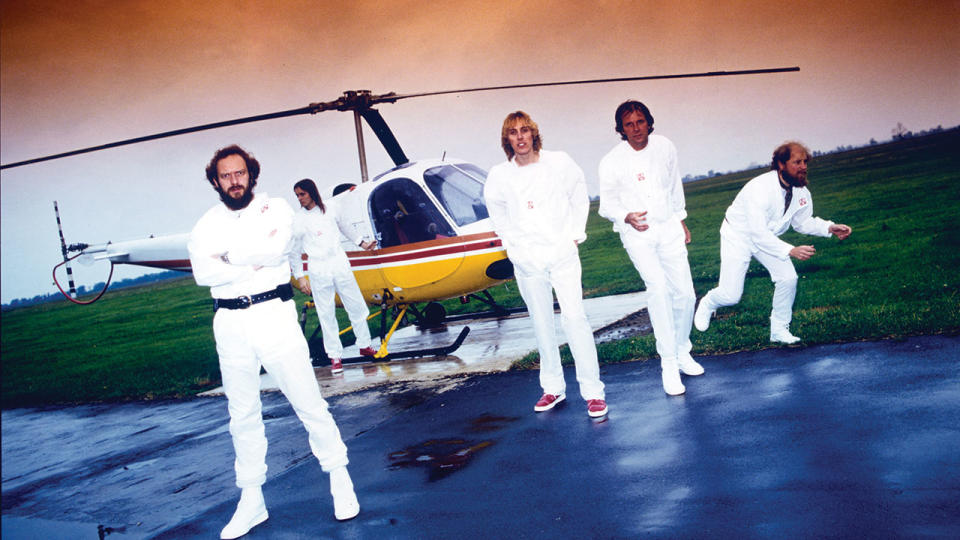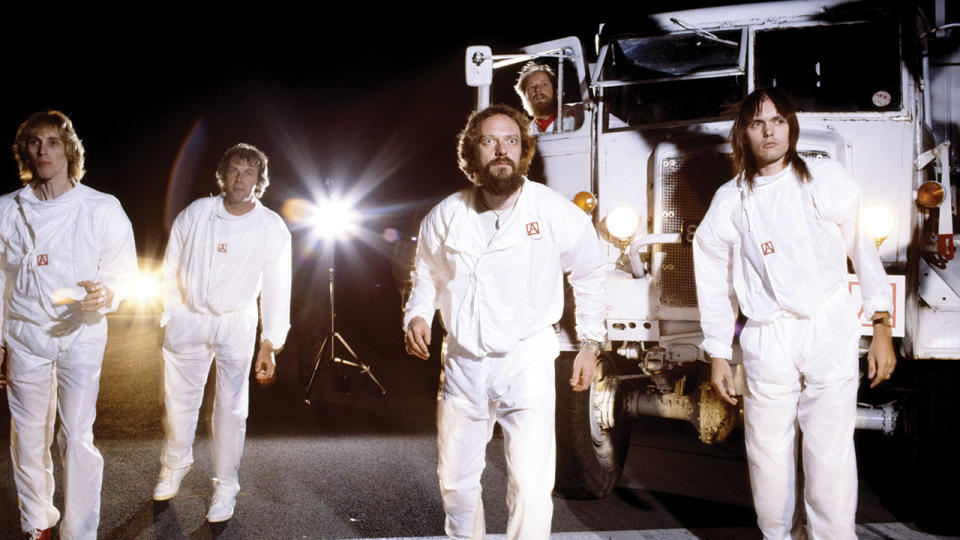“It was a finished product, called A for Anderson, intended as a solo record. Then the record company heard it." The story of Jethro Tull and A

New decade, new Tull. That’s the simplistic potted history version of what happened to Ian Anderson and his band before they made the album A in the spring of 1980. Three members of the line-up that had made the folk rock triptych of Songs From The Wood, Heavy Horses and Stormwatch over the preceding three years, namely drummer Barriemore Barlow, keyboard player John Evan and fellow keyboard player and pianist Dee Palmer, were now out, while Roxy Music alumnus Eddie Jobson and ex-Fairport man Dave Pegg were in, alongside new drummer Mark Craney.
“Jethro Tull – Big Split” barked the headline in Melody Maker, and the redux version of rock history has since cemented the event as such.
The truth, of course, is considerably more complicated. And having just revisited the album to help produce A (A La Mode), a handsome 40th Anniversary Edition reissue box, Anderson can now reflect on a turbulent time for Tull. Regrets? He has a few…
“There was a general feeling of ‘Let’s do something else, try some other projects, other interests in life, you know?’”
That’s Ian Anderson’s recollection to Prog over an 8am phone chat (“I’ve always been a morning person”). And for his part, that led to him writing and recording a solo album.
He had got to know Eddie Jobson from the keyboard player’s role in fusion proggers UK, alongside John Wetton and Terry Bozzio, when the supergroup (by that time no longer featuring original members Allan Holdsworth and Bill Bruford, and soon to call it day altogether) had opened for Tull on a North American tour the previous year.

“I wanted to do something that sounded different, hence working with Eddie,” says Anderson. “He was a very quiet, thoughtful guy – but on stage he had this grand and rather bombastic sort of way of performing, and he played a Yamaha CS-80, this analogue leviathan that produced these huge, big fat synthesiser sounds and sweeping portamentos. I was writing music where I felt he would work within that context.”
Jobson suggested they also use an American drummer he had been rehearsing with – Mark Craney. Dave Pegg, by then part of Tull’s touring line-up, also had sufficient time off from Fairport Convention to contribute bass and mandolin. No harm in working up a few songs together, right?
Initial sessions, though, made it clear to Anderson that the sound needed other elements.
“It was meant to be more of a keyboard sound to the album but we thought, wouldn’t it be nice to have a guitar solo there and a guitar riff there? So I called Martin and asked if he could come in and do a couple of overdubs.”
At first Barre recalls being reluctant, having earlier encouraged Anderson’s desire to do something outside Tull with new musicians. But once he was persuaded, it proved a turning point in the evolution of A: “We immediately seemed to have some synergy within the band at that point,” says Anderson. “So what started off as a solo album was increasingly sounding more of a band unit.”
Once the album was in the can, other forces came to bear.
“It was a finished product, called A for Anderson, still intended as a solo record. Then the record company heard it. They didn’t control everything by any means. But they did begin to exert strong… advice that it would be a lot easier to market this as a Jethro Tull album. And it wasn’t me strumming an acoustic guitar and singing wistful singer-songwriter pieces – it was a full-on band album. So, I went along with it… and I genuinely regret that.”
Those sentiments have much to do with the upset it caused the three Tull members not involved – feelings heightened when the aforementioned Melody Maker story broke at the start of July 1980, a few weeks before the album’s release.
Anderson had written to John Evan, Barriemore Barlow and Dee Palmer explaining his decision to make the album without them, but they took this as a cold, impersonal dismissal from the band. In hindsight, wouldn’t it have been better to, say, call them, if he couldn’t tell them face-to-face?
“Well,” says Anderson with a touch of irritation, “I like to put it in writing. It seems to me more formal, much more considered, I am not someone who waffles on the phone to risk there being a misunderstanding or, you know, words poorly chosen in the haze. I write letters, and I write emails. If you are offended by getting a letter from me, you would have been more offended if you had nothing at all. That’s the way I work and if you don’t like it, tough shit.”

In any case, it doesn’t seem like Tull had been a happy camp towards the end of the Stormwatch era, with at least one of the exit-bound trio already considering their options according to Anderson.
“John Evan became less engaged with the band during the latter part of the 70s… [he] kind of indicated that he didn’t really want to carry on doing the Jethro Tull thing anyway. Barrie Barlow had made it very clear he didn’t want to carry on… so, you know, at least a couple of them had jumped ship anyway.”
Nonetheless, he admits, “It’s one of those messy things. It just would have been better if I stuck to my guns [with the label]. Then I could have said, ‘next year’ to the other guys, you know. ‘You wanna get going again, do you want to carry on?’
“But that opportunity never really came, because we went out on tour doing the A album and then Martin, Dave and myself moved on into a period of working on new music over the next year or two, then [drummer] Gerry Conway joined for The Broadsword And The Beast album [in 1982] and Peter-John Vettese [keyboards] came into the band for the latter part of the recording that album. So it was a transition period.”
It was also the start of a stylistic evolution. From the outside looking in, Tull fans over the years have come to view A as a diversion from Tull’s creative trajectory, and a not-entirely-welcome one to some ears. That’s another reason, one might argue, that A could have stayed under the Anderson solo name. It might have acted as a signpost towards 1983’s actual solo debut Walk Into Light, a much more synth-focused record co-written with Vettese. As it was, though, after the more familiar feel of Broadsword And The Beast, 1984’s Under Wraps moved further down the road towards an electronically oriented sound.
And yet, when you listen to the reissue of A, with Steven Wilson’s remastering polishing the sound considerably, the perception of it as an album full of futuristic digital affectations isn’t really borne out by the reality.
For one thing, it’s still full of distinctly proggy sounds and song structures. Protect And Survive employs anxious time signatures to underpin first Anderson’s panicky flute flurries and then Barre’s uneasy guitar lines, before Batteries Not Included is punctuated with juddering, staccato rhythms and angsty fretless bass licks.
Elsewhere, other customary Tull influences abound. Fylingdale Flyer blends folky vocal harmonies with proggy tempo backflips and feisty guitar soloing, while Working John, Working Joe builds from familiar acoustic building blocks. And The Pine Marten’s Jig is a jaunty instrumental that sounds pretty much how you would expect from its title.

One reason why A left the impression of a modernistic, welcome-to-the-future record was that its subject matter was distinctly contemporary, with lyrical themes including nuclear paranoia, a love-hate relationship with technology and consumerism – in Batteries Not Included and 4WD (Low Ratio) – and, in the case of opening track Crossfire, terrorism.
On that track, Anderson sings from the point of view of a hostage inside the Iranian Embassy as the SAS attempted to storm the building – a real event that played out on live news broadcasts in May 1980, as Anderson was writing songs in his home studio.
“I wrote it, if not the same day, then the day after,” he recalls. “And that’s not that unusual for me. Often things I write are topical in the sense that maybe not everyone has read about it, but I have.”
That seemed to be the case on tracks such as Fylingdale Flyer (‘Forget the things that you saw’), based on an incident where a malfunctioning early warning system led the Americans to believe Russia had launched a nuclear attack, and Protect And Survive, borrowing its name from the public information campaign briefing the population in case of nuclear conflict.
“That felt poignant at the time,” he says, “because we were living with a very real sense of threat. Look at the average plume from the largest Russian nuclear bombs at the time, and it would have been curtains for at least a third of the population of the UK.
“I studied the available science and information quite carefully at the time, and, you know, without being panicky or survivalist about it, I had a plan B and a plan C as to at what point I would do what and in terms of moving my family and heading somewhere else. The prospect was horrific.”
The idea that the record had a futuristic theme (by implication rejecting Tull’s more organic, folk-oriented past) was doubtless reinforced by A’s sleeve art, which featured the band dressed in white boilersuits in some kind of air traffic control centre, looking up at the album’s logo, displayed as a mysterious sign in the night sky. It was the kind of look one might sooner have expected Heaven 17 or Devo to adopt than a bunch of hairy proggers, but it was a striking image nonetheless.
“It wasn’t quite as high-tech as we made it look,” Anderson admits. “We did the photos at a small provincial aerodrome that once hosted Spitfires and Hurricanes. And just for an afternoon, it hosted us wearing some rather silly outfits, which were unfortunately my idea…”
His rueful recollection of the costumes is perhaps coloured by their adoption for the subsequent tour. And while any discomfort they caused doesn’t seem to have affected the quality of the performances (a muscular, remastered LA Sports Arena show from that year is included in the reissue package in full), the frontman has rather compromised memories of wearing them.
“I wore one from parachute material,” he says, “while the other guys wisely chose to have some made in cotton or something more sensible. I wore my white one onstage and of course I find out halfway through the first show that it made me sweat even more profusely than I usually would.
“As a result, it became completely transparent, ha-ha! So I had my comeuppance, by showing everybody what I had for breakfast basically…”
Perhaps mercifully, there are no plans to reanimate the jumpsuits if and when Tull get to tour again later this year. But even if the UK dates scheduled for September onwards can go ahead, Anderson envisages still having to adopt certain rules in terms of apparel.
“I’m an old guy – I don’t have that many years ahead of me, and I expect to be wearing a mask for the rest of my professional life,” he says. “We’ll be trying to find our way around Covid for the foreseeable future. But it’s something I’ve got used to now.”
Anderson is similarly philosophical about the obstacles placed in touring musicians’ paths by Brexit.
“At the moment it’s an absolute nightmare. We can only hope for some sense. We travel very light, we have local backline instruments and production wherever we go, so hopefully we won’t have to change our habits too much. But I’m being optimistic – it could be way more difficult than that.”
Still, life for a prog musician has never been straightforward. And given that 40 years ago Ian Anderson was facing in-band mutiny, malfunctioning wardrobes and the prospect of nuclear annihilation, maybe it’s just business as usual for Jethro Tull.
This article originally appeared in issue 120 of Prog Magazine.
